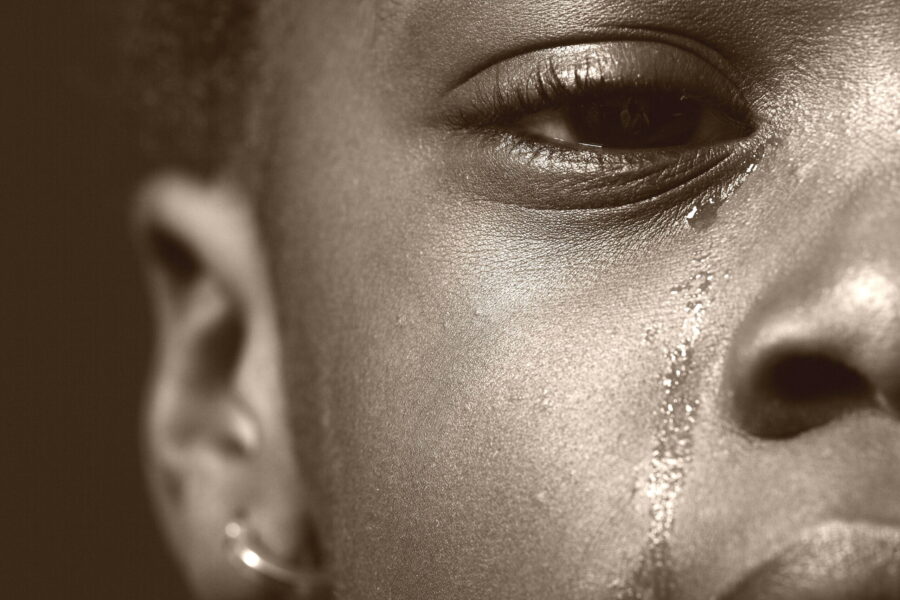It’s All Right to Cry – No, Really
It’s all right to cry
Crying gets the sad out of you
It’s all right to cry
It might make you feel better
If you grew up in the 70s, you might remember these lyrics from the children’s album and Emmy-winning TV program Free to Be… You and Me, memorably sung by pro defensive lineman Rosey Grier.
If not, it’s worth a listen. It’s as true today as it was then. Because as it turns out, a CNET article asserts, crying is actually good for you, a healthy and important way to process emotions.
Research shows crying is unique to humans, and universal. However, most everyone has had the experience of choking back tears, trying not to cry in public. And many of us have been shaming into not crying. “There’s no crying in baseball,” Tom Hanks’ character shouts in exasperation as he berates a player in A League of Their Own.
While some view crying as a sign of weakness, crying is actually a healthy coping method, a release valve to get rid of stress or calm down.
How do tears work?
There are three kinds of tears: basal, reflex and emotional. Basal tears are everpresent, a protective lubricant for your cornea. Reflex tears occur in response to irritants in the atmosphere, like smoke or the oils released when you cut an onion. Emotional tears are produced in response to strong emotions like fear, joy, or sadness.
All tears are produced in the lacrimal glands above each eye and drain into the puncta of the eye, the tiny holes in the corners of your eyelids that are the opening of the tear ducts, and down into the nasolacrimal ducts in the nose. Emotional crying produces more tears than can drain easily, leading tears to spill over and run down your face.
What’s different about emotional tears?
Reflex tears are mostly water and antibodies to combat infection. Research shows that that proteins and hormones are present – prolactin, potassium, manganese and stress hormones – only in emotional tears, suggesting they offer a unique type of stress relief.
How do tears provide relief?
According to the article, crying “activates your parasympathetic nervous system, slowing your breathing and heart rate and bringing you relief.” It is your body’s natural regulatory response to overwhelming, strong emotion, helping restore you to your normal balanced state. It takes a few minutes of crying and deep breathing for your heart to slow and your body to relax once again.
A good, long cry can also alleviate physical and emotional pain, as your body releases oxytocin and pain-relieving endorphins. Research suggests it can play a critical role in the grieving process, potentially helping you process loss.
Crying can lift your mood
Crying helps relieve tension, as emotional tears flush out stress hormones and the mineral manganese, associated with anxiety, irritability and nervousness.
Keeping your emotions bottled up through repressive coping has been linked to a host of physical problems, including poor immune health, cardiovascular disease and high blood pressure.
Crying connects you to others
Crying also increases social connections with others, as it increases empathy, closeness and encourages support from family and friends.
Crying can also signal a need for greater help. If you find yourself crying for no apparent reason, it can be a sign of depression. If you suspect you are experiencing signs of anxiety or depression, reach out to your doctor or mental health specialist. Anxiety and depression are treatable conditions. With proper help and support, you can feel considerably better.
Crying is good for you
In short, crying in response to heightened emotions is normal, healthy, and helpful. It plays a healing part in the process of grief. It has an important social function, connecting you to the support of others. It boosts your physical and emotional health, flushing out stress hormones and returning you to a calm state. Not only is it nothing to be ashamed of, but it’s good for you.
As Rosey Grier finishes his song, he speaks directly to his audience: “It’s all right to cry, little boy. I know some big boys who cry too.” Words of wisdom, indeed.
Read the full article here.
Leamey, Taylor. “The Benefits of Crying and Why It’s Good for Your Health.” CNET.com, 5 June 2022, https://www.cnet.com/health/medical/the-benefits-of-crying-and-why-its-good-for-your-health/.



